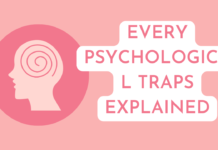Paper-I
(Part-A)
1.(a). Discuss the doctrine of ‘Pith and substance relating to the distribution of legislative powers between the Centre and the states with the help of landmark judicial decisions.
1.(b). The purpose of the office of the ‘Lokpal’ is not to adjudicate, but to provi e regular machinery for investigating grievances against the administration in a discrete and informal manner.” Critically examine this statement by providing proper justification of the office of the ‘Lokpal’ in India.
1.(c). “ ‘Audi alteram partem’, rule is a very flexible, malleable and adaptable concept of natural justice to adjust the need for speed and obligation to act fairly.” Examine the statement with the help of decided case-law.
1.(d). “The issue of Parliamentary-privileges has been a bone of contention and conflict between the Parliament and the Judiciary.” Analyse this statement in the backdrop of decided cases.
1.(e) “Right to Privacy is protected as an intrinsic part of life and personal liberty enshrined under Article 21 of the Constitution of India.” Elucidate this statement in the light of the decision of Justice K.S. Puttaswamy (Retd.) v. Union of India.
2. (a) (i) Give an overview of the growth of the Tribunals in India with special reference to Administrative Tribunals established under the Administrative Tribunal Act.
(a) (ii). “Revival of the Panchayati Raj system in India is an aid to reduce the workload on the Judiciary.” Comment. (20 Marks)
2.(b)“Power of the Parliament to amend the Constitution is wide, but not unlimited.” Do you agree with this statement ? Discuss whether the doctrine of basic structure has reinforced the power of judicial review under the Constitution.
2.(c). Examine the nature of the powers of the High Courts under Article 226 of the Constitution of India and distinguish it from the powers of the Supreme Court under Article 32.
3.(a). While conferring the power of delegated legislation on the administration, the enabling Act may specify the procedural safeguards to be followed in the exercise of the power. What are the consequences of non-compliance with the requirements as laid down in the Act ? Discuss with the help of decided cases
3(b). “The Election Commission of India is an autonomous constitutional authority responsible for administering the election process in India.” Comment by explaining the powers and functions of the Election Commission of India.
3(c). “India that is ‘Bharat’, shall be a Union of States.” Explain. Do you think that the Indian Constitution is a Federal Constitution ? Discuss with the help of decided cases.
4(a) What do you mean by the term ‘Rule of Law’ ? The basic element of Dicey’s doctrine of the rule of law is, ‘be you ever so high, the law is above you’. Discuss with the help of decided cases.
4(b). Discuss the Ordinance making power of the President. Can the validity of an Ordinance be challenged in the Court of Law ? Cite relevant case-law.
4(c) Examine and explain the following statements :
(i) Public Interest Litigation is a tool to promote politics of the Judiciary.
(ii). Judicial Activism has both positive and negative impact on the Judiciary.
Part- B
5(a) “International Law is the vanishing point of Jurisprudence.” Explain
5(b) What are the rules of International Law governing the lawful use of force by the States in the exercise of their inherent right of self-defence ?
5(c) What is the difference between International Humanitarian Law and International Human Rights Law ?
5(d) What do you mean by State-Recognition ? What are the legal effects of recognition ? Differentiate between de-facto and de-jure recognition.
5(e) Discuss in brief, the various modes of peaceful settlement of international disputes. Do you think that these modes of settlement are effective or is any other mode required in the present scenario ?
6(a). What are the various theories prevalent for deciding the relationship between International Law and Domestic Law ? How do the National Courts in India apply the International Law ?
6(b). Briefly explain the following :
(i) Doctrine of Innocent Passage
(ii). Exclusive Economic Zone and the rights of other States thereto
6(c). “The effectiveness of the International Criminal Court depends on the degree of co-operation provided by the States. This co-operation concerns not only the State-party to the International Criminal Court but also the non-party State.” Discuss.
7(a). What do you understand by territorial jurisdiction of States ? Do you agree with the view that Right to Seek Asylum is firmly established under International Human Rights Law ? If so, substantiate your answer with reasons.
7(b). Examine the extent and limits to which a treaty can confer rights and impose obligations on the third State which is not party to the treaty.
7(c). “United Nations is designated as the foremost forum to address the issues that transcend the national boundaries, which cannot be resolved by a country alone.” In the light of this statement, discuss the functions of the General Assembly
8(a). Write critical notes on the following :
(i). International efforts towards protection and improvement of human environment.
(ii). State-sponsored terrorism
8(b). Discuss the main provisions of the Comprehensive Nuclear Test Ban Treaty (CTBT). Also explain the reasons why India has not signed this treaty.
8(c). Explain the historical evolution, objectives and main principles of the General Agreement on Tariffs and Trade (GATT).
PAPER- II
(Part-A)
1.(a). Even without mens rea there are certain acts, which are offences under the Indian Penal Code, 1860. Enumerate such offences
1.(b) Right to private defence under the Indian Penal Code, 1860 is available only to an innocent person. It is not a right to retribution. Analyze.
1.(c). “Act done by me against my will, is not my act.” Examine in the light of legal provisions of the Indian Penal Code, 1860.
1.(d) “ ‘Pigeonhole theory’ in the law of tort holds no justification now.” Critically examine.
1.(e) “E-commerce has adversely affected the consumer protection in India.” Elucidate the statement.
2. (a) “Any interference with a plaintiff’s property may cause personal discomfort to the plaintiff in enjoyment of the property.” Critically examine the statement with the help of decided cases.
2.(b) “Recent judicial decisions of the courts have changed the spirit of Section 498 A of the Indian Penal Code, 1860.” Explain the statement with the help of judicial pronouncements.
2.(c) every culpable homicide and murder is necessarily a hurt, but Every hurt is not necessarily culpable homicide and murder.” Elucidate.
3.(a). ‘A’ attempts to Steal some jewels by breaking open a box belonging to ‘B’ and finds, thereafter so opening the box, that there is no Jewel in it but A simultaneously puts 100 currency note in the box, which was already stolen by A from C. Decide as to what offence(s) is/are committed A
3(b).the basic spirit of the Scheduled Castes and Scheduled Tribes (prevention of Atrocities) Act, 1989, which was diluted by the judiciary in kashinath Mahajan case, has been restored by the legislature recently. Examine critically.
3(c). “Ascertainment of causation is a problem, when the events causing damage to plaintiff are not simultaneous but successive.” Elaborate it with help of decided cases under the law of tort
4(a) A gold Smith putting earring to women’s ear does not require as much care as a surgeon performing surgery on the ear of women’’. Elaborate the law relating to degree of care required under the law of tort.
4(b). Mere physical boundaries are not the essential requirement to constitute the tort of ‘false imprisonment’’ but psychological boundaries too are enough in this regard. Examine
4(c)Imputation of unchastity against a women by a spoken words is a wrong actionable without proof of special damage.” Examine under the law of tort.
Part- B
5(a) “The law of contracts is not the whole law of obligations, but it also deals with rights and obligations of both”. Elucidate.
5(b) “The dissolution of partnership is the dissolution of a partnership firm not dissolution of a partnership firm, but not the dissolution of partnership.” Elucidate with the help of legal provisions and cases.
5(c) “Public interest litigation is not the pill 0f all ills, it is the boon of the courts. However it is also the duty of the court to prevent its misuse.” Elucidate.
5(d) “Contract of agency is revocable like an ordinary contract, but sometimes it is impossible to repudiate it.” Analyze with the help of decided cases and relevant provisions.
5(e) “Pragmatic regime of right to information for citizens is the key to good governance in India, but it is not being implemented in its original spirit.” Examine it in the light of decision of the Supreme Court of India in Anjali Bhardwaj vs. Union of India, February 2019.
6(a). “Discharge of a contract includes breach of contract, but breach of a contract does not necessarily include discharge of contract.” Examine the statement with suitable illustration.
6(b). “The National Green Tribunal, which was established for effective and expeditious disposal of cases relating to environmental protection and conservation of forests and other natural resources, has played a pivotal role in recent past in this regard.” Examine the statement with reference to pronouncements given by NGT.
6(c). Ascertainment of jurisdiction is a big challenge Under the cyber law. Elaborate the relevant legal provisions of the IT act along with various tests applied by Indian courts.
7(a). “principle of unjust enrichment finds place indirectly under the law contract.” Explain its various dimensions.
7(b). “Alternative dispute resolution mechanism as provided under the Legal Services Authorities Act, 1987 has played a pivotal role in dispensation of justice to the needy persons.” Explain with the help of legal provision and case law.
7(c). “parties to the contract of sale may reduce or enhance the risk relating to passing of property” Elucidate its various dimensions under the law of sale of goods.
8(a). “In present time, there is a conflict between the right to access to knowledge and copyright law.’’ Explain the statement in light of doctrine of fair dealing under the copyright law.
8(b) “Approximate justice with finality by the way of arbitration is against the basic principle of administration of justice in the courts.” Examine the statement in the light of latest developments of alternative dispute resolution system in India.
8(c). “The basic purpose of competition policy and the law is to preserve and promote competition as a means of ensuring efficient allocation of resources in an economy.” Elucidate the statement in the light of new economic scenario in India.











